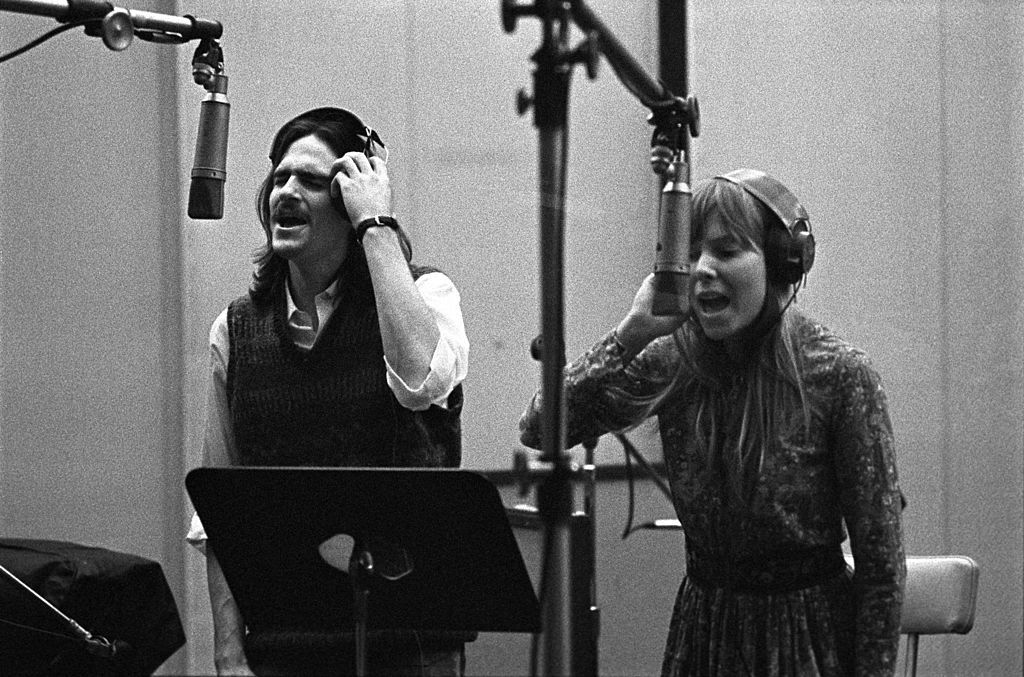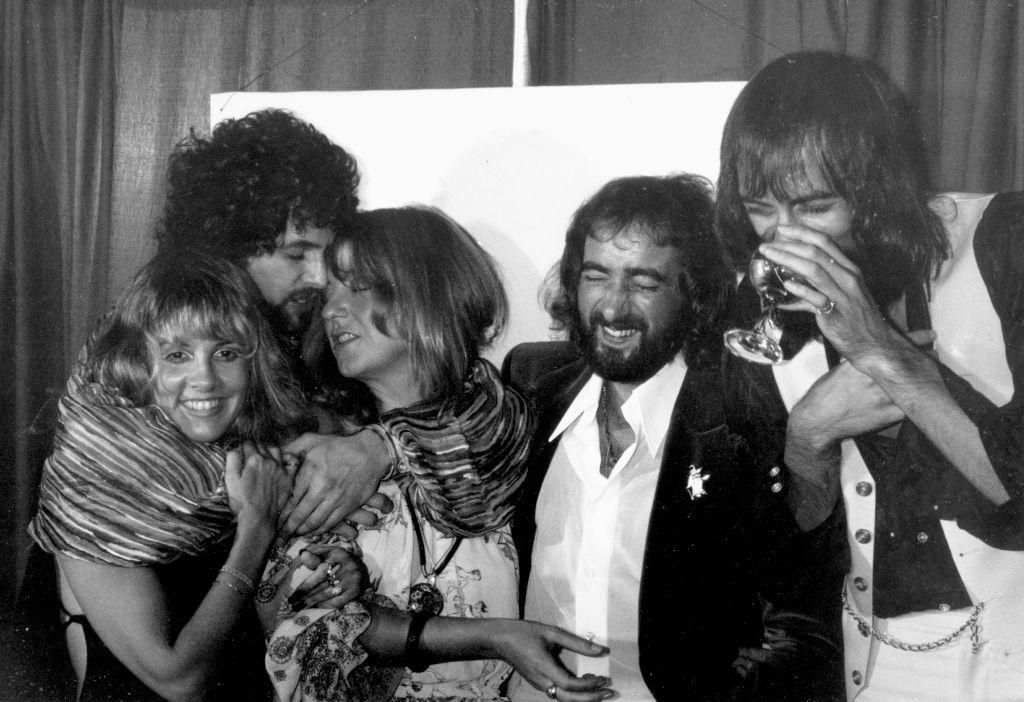The Heart-Wrenching History of the Breakup Album
From Joni Mitchell’s ‘Blue’ to Olivia Rodrigo’s ‘Sour,’ love and loss has an ever evolving soundtrack
/https://tf-cmsv2-smithsonianmag-media.s3.amazonaws.com/filer/c9/1f/c91f34a9-405b-4d6a-ba6b-2771e3fbee6c/gettyimages-116781426.jpg)
When it was released on May 21, Olivia Rodrigo’s debut album SOUR captivated audiences with its searing portrayal of young heartbreak. Like many artists before her, the 18-year-old singer-songwriter tapped into the near-universal experience of teenage love and loss.
The relatability of the lyrics certainly contributed to SOUR’s chart-topping launch, as did Rodrigo’s sound. Encapsulated in her hit singles “driver’s license” and “good 4 u,” Rodrigo mixes elements of pop punk and traditional heartbroken ballads that speak to jilted young love and betrayal. The album enjoyed the biggest first week of any 2021 release on the Billboard 200 and became the year’s most-consumed album by a female artist so far.
Rodrigo’s performing career has already expanded far beyond her recent debut as Nini Salazar-Roberts in Disney’s “High School Musical: The Musical: The Series” to her solo appearance on “Saturday Night Live” in May and invitation to the White House in July. Rolling Stone critic Angie Martoccio describes her as “a revelatory new pop voice,” despite her being “a pop star who emerged seemingly out of nowhere in January.”

“When you have this young woman teenager pouring out her heart, we're all just ready to receive it,” says David Metzer, a music historian at the University of British Columbia. This is especially true, he speculates, when emotions are running high during the Covid-19 pandemic. “We're all so touched by it, because we can all still see ourselves not only as brokenhearted teenagers, but we can all just imagine how vulnerable we are at this moment.”
Rodrigo's 11-song album—a cohesive narrative of her breakup, depicting its various stages and the turbulent emotions involved—is the latest addition to a roughly 50-year history of painfully honest portrayals of heartbreak through song. From Joni Mitchell and Willie Nelson to Adele and Beyoncé, the breakup album has become a staple of popular music through the decades.
“The thing we all want in a breakup is company,” says Metzer, “and we want someone to listen to us cry, listen to us complain, listen to us curse that person.”
What Qualifies as a Breakup Album
Because the genre is so amorphous (and relatively new), it’s hard to define exactly what constitutes a breakup album. For the sake of looking at the history of the breakup album, it seems only right to highlight examples from the pioneers, the masters and the genre-benders, pulling from compilations of the “greatest breakup albums of all time” in Paste magazine, NME and other online references.
The structure of the tracklist and the inclusion of certain themes impact whether an album may be considered a breakup album. From beginning to end, the traditional structure takes listeners through the stages of the breakup much like the stages of grief—denial, anger, bargaining, depression and acceptance.
As music formats have changed over time and streaming has increased in popularity, artists have generally moved away from focusing on creating a comprehensive narrative in a single album. Krystal Klingenberg, a curator of music history at the National Museum of American History, explains that before the rise in streaming, “We listened to it [an album] all the way through. Now, in the land of Spotify, Apple Music, Tidal, etc., we're listening to singles, they’re putting out EPs.”
You already know popular breakup songs like “Ain’t No Sunshine” by Bill Withers and “Since U Been Gone” by Kelly Clarkson, but the best medicine for a broken heart is uninterrupted hours of angst. As Metzer shared, “Breakup songs are good, but, as we all know, breakups are long affairs. People turn to an album because there's a lot to say here and sing about for the breakup."
The Pioneers
The template for a breakup album was put forth by pioneering singer-songwriters in the 1970s. “One of the facets of the singer-songwriter genre was that artists would disclose aspects of their life,” Metzer explains.

Joni Mitchell’s 1971 album Blue embraced raw emotional processing in this way, with heartbreak and regret woven throughout. It came in the wake of her separation from Graham Nash and her short romance with James Taylor, which compounded in one of the most well-known breakup albums of all time. Still, it is not entirely clear whom each song is about and how each lyric connects to her former lovers.
As Metzer explains, “In the song ‘River’—which has these metaphors of skating down a river and getting away from one's troubles—she throws in this line, ‘I made my baby cry.’ And then you want to know what's that about, but she doesn't tell us.” In this way, Mitchell distills the emotions of heartbreak into her songs while still maintaining a veil of mystery. Literary devices create speculation around the invoked characters in each song, but Mitchell neither confirms nor denies any guesses.
Willie Nelson’s Phases and Stages, released a couple of years after Blue, relays similar messages of anguish and heartache, but from both the woman’s (side one of the record) and the man’s (side two) perspective. Nelson’s venture into this territory “really imagines what a breakup album can be in country music,” says Metzer. The experimental record also explores the different outcomes of a breakup, with the woman character finding a path to move on, while the man cannot escape his sadness by the end of side two. It has been lauded for its compassionate portrayal of both sides of the relationship. “[Nelson] seems to understand an unloved woman better than any dozen articles from Ms.” wrote Chet Flippo for Rolling Stone in 1974.

In 1977, Fleetwood Mac released one of the most famous breakup albums of all time: Rumours. The band, consisting of five members entangled in a number of love affairs inside and outside of the studio, recorded Rumours as those relationships fell apart. “The recording studio became the crucible of romantic tension,” Metzer says.
The rumors surrounding the band’s romantic and sexual escapades only enhanced the record, which Klingenberg describes as “the pop album that is pointed to as being the breakup album.” The heartbreak made great music. In “Go Your Own Way,” Lindsey Buckingham sings, “Packin’ up, shackin’ up’s all you wanna do,” while in the most popular song from the album, “Dreams,” Stevie Nicks responds with “Players only love you when they’re playing.” The back-and-forth likely referenced their turbulent romantic dynamic at the time.
Shortly after Rumours’ Grammy-winning success, Marvin Gaye released Here, My Dear, a double LP album with enough songs to create a fuller narrative of a breakup (and its aftermath). Following the narrative of Gaye’s bitter divorce from his first wife, Anna Ruby Gordy, the record opens with its title track and resentful lyrics:
I guess I'll have to say this album is
Dedicated to you
Although perhaps I may not be happy
This is what you want.
In Here, My Dear, Gaye had ample time (73 minutes, to be exact) to explore all the contours of a breakup, though his perspective is often tinged with a spitefulness that stands in the way of his portraying both sides of the story. Gordy wasn’t a fan of Gaye publicizing their conflicts and divorce proceedings, which were further complicated by the fact that the album itself would serve to pay Gaye’s court bill. He rounds out the album with a song about a new love, titled “Falling in Love Again.” As Metzer describes, the beginning and end are “just the extremes,” and in between, Gaye runs listeners through the various stages of breakup.
A Reprise in the 2000s
Perhaps because of the waning popularity of narrative albums, breakup albums hit a lull in the 1980s and ‘90s, according to Metzer. But in the early 2000s, the genre resurfaced, at least in part due to media and the internet making celebrities more accessible and visible.
Adele is a quintessential breakup-album artist from the 2000s, with her releases 19 and 21. Breakup albums are often intertwined with themes of coming of age, and through 19 and 21, listeners can trace the events in the artist’s life and map them onto her relationships at the time.
“Here's this very young singer, who seems to have, from early on, figured out that she wants to sing about her life, and that she was going to do it in this format,” Metzer says.
Adele’s chart-topping “Someone Like You” concentrates on the “moving on” stage of the breakup. “She actually goes to the door of her ex, and she says ‘I’ve heard you are in this new relationship.’ And she has to come to the fact that she actually does wish him the best, but it’s painful,” says Metzer. Audiences took notice of Adele’s superstar potential. In 2008, shortly after the release of 19, a reviewer for the Guardian wrote that she “really might be the best of the bunch” among her female contemporaries.
In the 2000s and 2010s, Kanye West’s 808s & Heartbreak and Beyoncé’s Lemonade are examples of breakup albums that break the mold by incorporating themes of grief and reconciliation into their heartbreak narratives. As West copes with the loss of his mother, "Coldest Winter" is imbued with sadness and despondency. The lead singles, "Love Lockdown" and “Heartless,” describe the aftershocks of a foundering relationship with fashion designer and stylist Alexis Phifer.
“[808s & Heartbreak] was so different for hip hop,” Metzer explains, “because sonically it's this weird mix of processed vocals and kind of electronic minimalism, but then—even by Kanye standards—it's a much more heartfelt Kanye than people were used to.”

Beyoncé’s instant classic album from 2016, Lemonade, challenged the traditional breakup album formula inherently, since her “breakup” did not result in permanent separation. “She takes you through this narrative of realizing that they [she and Jay-Z] might be coming apart and then eventually finding their way back to each other,” says Klingenberg. “Is it still a breakup album if you get back together at the end?”
Lemonade, reminiscent of 808s & Heartbreak, also includes songs that do not directly deal with the breakup. In this case, Beyoncé brings in themes of motherhood, intergenerational trauma and Black feminism. The tracks “Sorry,” “Sandcastles” and “Formation” from the album showcase these larger motifs, though they remain grounded in the ambiguous breakup story arc.
“Lemonade is an attempt at storytelling, and if the personal sometimes overwhelms the political that’s to be expected,” music critic Hilton Als writes in a review for the New Yorker.
The film Beyoncé: Lemonade accompanies the record’s complex depiction of her relationship with Jay-Z. This 65-minute visual sequence—sampling from the work of spoken word poet Warsan Shire and taking viewers through an odyssey of images connected to Black history, featuring primarily Black women performers—adds a new dimension to the breakup album. “Beyoncé constructed something that is meant to be experienced all the way through,” Klingenberg says.
A Female Majority
While both female and male artists have dabbled in the genre, the history of the breakup album has been dominated by women. For female singer-songwriters of the '70s, the niche became a way to “break away from the types of numbers they were expected to sing in popular music at that time,” Metzer says—sugary pop songs about crushing on boys. The breakup album “provides an opening that female artists might not necessarily have in other genres and formats,” he says.
Klingenberg adds, “When you think about the ways in which men, in American society especially, are taught to not deal with their feelings or emote in particular ways, it's not surprising that breakup music is coming from women, because women are allowed to express their emotions in a particular way.”
Rodrigo, in her song “good 4 u,” even digs at this particular gender expectation, singing, “Maybe I’m too emotional, but your apathy’s like a wound in salt.”
Artists like Beyoncé, Adele and, famously, Taylor Swift have been critiqued for focusing their music on relationships, though, and women artists have faced relentless flak for their breakup albums. Swift commented publicly on the gendered double standard in 2014, noting that male artists like Ed Sheeran and Bruno Mars were also “all writing songs about their exes...and no one raises the red flag there.”
But the sales of Rodrigo’s SOUR speak to the public’s appetite for the genre. The album returned to the top slot on the Billboard 200 albums chart for a fifth week in the wake of its August 20 release on vinyl. In her songs, which are widely believed to be about Disney co-star and ex-boyfriend Joshua Bassett, the singer-songwriter crafts a narrative of a relationship gone sour. Beginning with “brutal” about social pressures placed upon young women and ending with “hope ur ok” about queer adolescence, Rodrigo fills in the rest of the tracklist with a glimpse into her own relationship’s ups and downs. These twists and turns are well-represented by the song “1 step forward, 3 steps back,” which describes how quickly the moods of her partner shifted throughout the relationship.
As Rodrigo boldly steers the genre into new territory by reviving the classic formula for a younger set, more music will surely take up the heart-on-my-sleeve style.
/https://tf-cmsv2-smithsonianmag-media.s3.amazonaws.com/accounts/headshot/graciephoto.jpg)





/https://tf-cmsv2-smithsonianmag-media.s3.amazonaws.com/accounts/headshot/graciephoto.jpg)